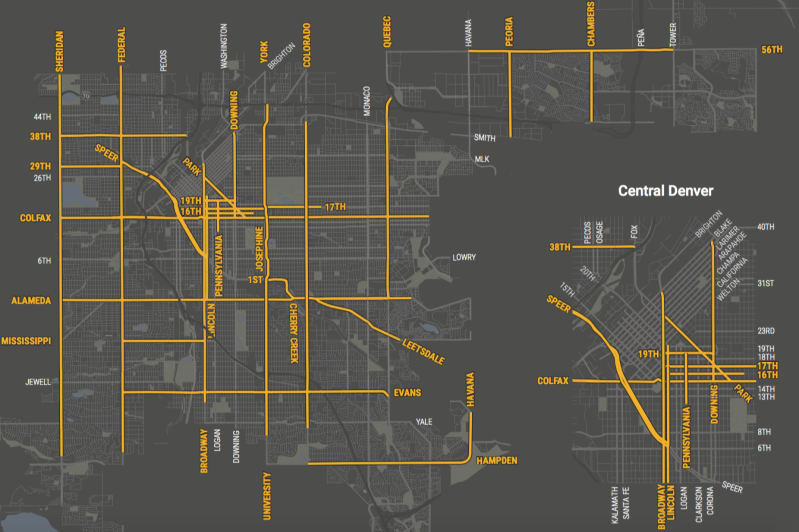5 Percent of Denver Streets Account for Half of All Traffic Deaths

Denver can save lives and prevent serious injuries by focusing resources on redesigning 27 especially dangerous streets.
Combined, these 27 streets are just 5 percent of the city’s street network, but they were the site of 130 deadly collisions, or about 50 percent of all traffic fatalities, between 2011 and 2015. Improving safety on these streets, which the city calls the “high-injury network,” will be a core focus of the Hancock administration’s Vision Zero plan.
The vast majority of traffic deaths and serious injuries occur on wide, multi-lane roads that feel like highways but cut through city neighborhoods. Streets like Federal Boulevard, Colfax Avenue, Colorado Boulevard, and Broadway — what Denver Public Works calls “arterial” streets — make up 96 percent of the high-injury network.
In tandem with the high-injury network, the city will prioritize “communities of concern” — areas that suffer a disproportionate share of traffic injuries and elevated obesity rates, while also having low levels of car ownership and a high concentration of schools, community centers, and elderly residents. These areas account for 44 percent of all pedestrian deaths.

Most of these streets are under the Colorado Department of Transportation’s jurisdiction, so Denver will have to assert itself and work with the state to engineer redesigns that reduce lethal driving speeds and prioritize the most vulnerable people on the street.
The high injury network is a key part of the Vision Zero action plan to improve street safety for everyone, which we’ll have more coverage on later in the week.


